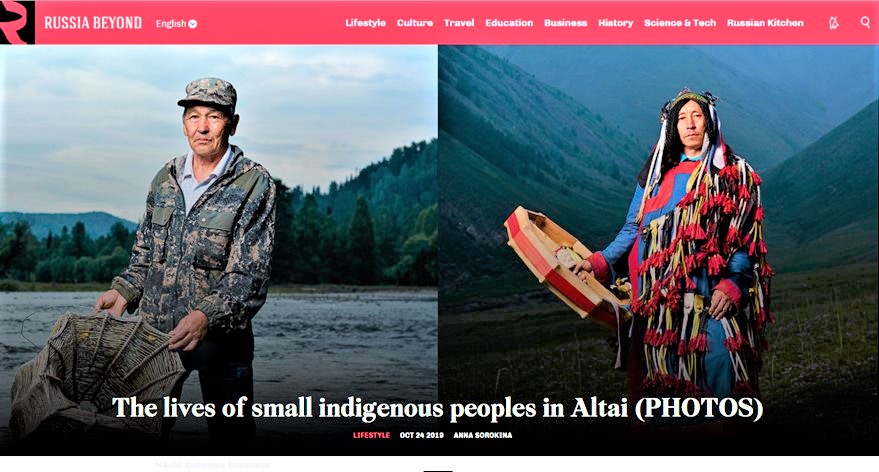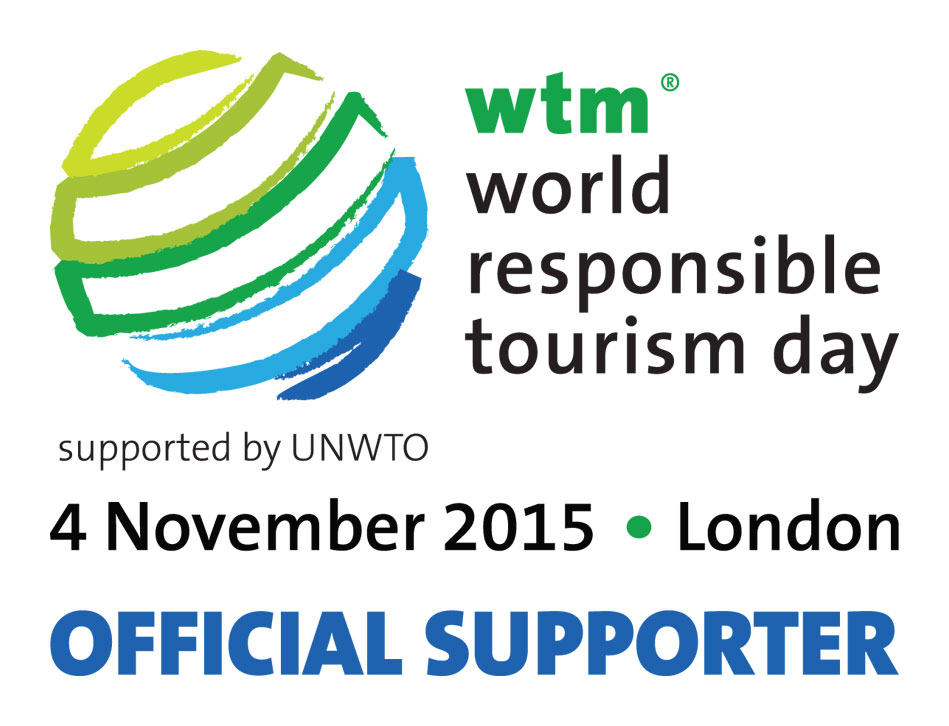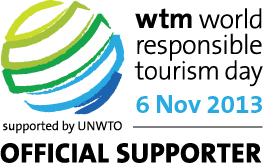Altai Republic Profile
LOCATION & GEOGRAPHY
The Altai Republic is a subject of the Russian Federation. It is located in the south of Western Siberia, in the heart of the Eurasian continent, in the mountains of the Southern Altai. The Republic shares border with China, Mongolia and Kazakhstan. It also has a common border with Altai and Kemerovo regions, the Republic of Khakassia and the Republic of Tyva. The distance between the republic and Moscow is 4000 km, and Irkutsk 1820 km. The Republic is situated in the Altai Mountains in the very center of Asia at the junction of the Siberian taiga, the steppes of Kazakhstan and the semi-deserts of Mongolia. Forests cover about 25% of the republic's territory. The most striking geographical aspect of the Republic of Altai is its mountainous terrain. The Republic's highest peak, Mount Belukha (4,506 m), is the highest point in Siberia. The Republic is situated within the Russian part of the Altai Mountains system, which covers a large part of the Republic and continues into neighboring Kazakhstan, China and Mongolia. It’s here that the taiga forest, steppe and deserts of these three nations collide together to form an environment that often feels magical when you travel across its landscape on foot, by horse or even car. The Katun and Biya are the main rivers. There are about 7,000 lakes that cover over 600 km2 in total, with Lake Teletskoye being the largest with an area of 230,8 km2. The Altai Republic can be considered the spiritual heart of Siberia, as many native Altaians, and Russians,
who practice Tengrism, Burkhanism and Pagan Slavic religions, believe the landscape holds a religious significance. Wherever you travel here, it’s easy to see people’s deference to the local surroundings in the form of kurgans (stone burial mounds), standing stones and prayer flags tied to sacred trees. Read about 8 reasons every traveler must visit Altai Republic here CAPITAL: Gorno-Altaisk (founded in 1824, population 64,000 people as of 2020) AREA: 92,900 km2 (1.8% of the territory of the Siberian Federal District, 0.5% of the territory of the Russian Federation) POPULATION & NATIONALITIES: 218,000 people (as of 2018). According to the 2010 Census, ethnic Russians make up 56.6% of the republic's population, the indigenous Altai people - 34.5%. Other groups include people of Kazakh (6.2%), and German (0.3%), together with smaller groups, each accounting for
less than 0.5% of the total population. CLIMATE The region has a moderate continental climate with cold winters and warm summers. The contrast of temperatures in the summer is from + 30 ° C during the day, to + 5 ° C at night. The average July temperature is +16°C. The peak winter season falls on New Year's holidays and Christmas. Temperature differences in winter from –10 ° C to −30 ° C. The average January temperature varies from –30°C to –12.4°C. The weather depends on the area: the mildest climate in the Chemal region, the driest and harshest — closer to the border with Mongolia. HISTORY The first people settled in the Altai valleys about 1,5 million years ago. It is the estimated age of the world-known Ulalinskaya site discovered in Gorno-Altaisk. In the 8th-3rd centuries B.C., this region was inhabited by the Skyphs-Pazyrykts - the founders of the Altai animal style. Hun-Sarmatian period in the history of the region began at the end of the 3rd century B.C. From the 6th century B.C., descendants of the Huns, ancestors of the Altai-Turkic people became the rulers of Central
Asia. Preserved elements of the Altai animal style in traditional arts of current homogeneous peoples speak in favor of Altai tribes’ connections with other ancient peoples of the Eurasian continent. Altai is the ancestral home of all the Turkic peoples of the world. Ancient Turkic people founded their state, khanate, here in 552. The original Turkic language was formed here. It spread among all the peoples of the khanate thanks to the emergence of written language later. This is the reason for the emergence of such a term as “Altaic language family”. Due to its geopolitical position in the center of Eurasia, the Altai region united different ethnicities and cultures for many eras. In 1206, the current territory of the Republic of Altai was part of the Great Mongol Empire. In the 14th century, the Mongol Empire disintegrated into separate states. Altai became part of two Mongolian states: Northern Yuan and Dzhungar Khanate. The southern Altai was ruled by Dzhungars until 1756. After the collapse of the Dzhungar Khanate, they became residents of the Russian Empire. The northern Altai joined the Russian Empire much earlier. Soviet power was established in the region by the end of 1919. In 1922, the Oyrot autonomous region was formed as part of Altai krai. It was renamed Gorno-Altaisky autonomous region in 1948. In 1992 – it was renamed the Republic of Gorny Altai and since 1993 - the Republic of Altai.
NATURE PRESERVES / WILDLIFE SANCTURIES The Republic of Altai has one of the most developed networks of protected areas of Russia. The total area is 25%. The Altaisky Preserve
Area: core area881,200 hectares, including 28,800 ha of wetlands and Lake Teletskoye water area, buffer area 962,800 hectares Location: on the north-eastern and eastern shore of Lake Teletskoye, occupies the basins of the Chulyshman River and its right tributaries. The uniqueness and diversity of the territory has received international recognition: together with Katunsky Reserve, the Ukok Quiet Zone, Lake Teletskoye and the buffer zone around it, Altaisky Reserve is part of 'The Golden Mountains of Altai', a World Natural Heritage site. Along the borders of the reserve there are high mountain ranges. In the north there is the Abakansky range, in the south the Chikhacheva range, and in the east the Shashalsky range. To the west the territory is bordered by the valleys of the Chulishman river, Karakem river, and Lake Teletskoye. There are several separate mountains located at the heart of the reserve, the highest of which is mount Bogoyash (3143m). Many of the rivers in the reserve are exceptionally beautiful, with strong rapids and swells, as well as peaceful stretches and waterfalls. The largest waterfall in Altai is located on the Chulcha river, it is called 'impregnable', and is 150m high. In the lowest sections of the various rivers there are steep slopes covered with dense forest, their riverbeds are covered with stones, and the average speed of the water-flow is 2 to 5 meters per second.
There are 1190 lakes in the reserve. The largest and most well-known of these are Lake Dzhulukul, situated at 2200 m above sea level, and Lake Teletskoye, also known as Altin-Kol, or the 'golden lake'. As a result of its great depth, Teletskoye has a huge quantity of pristine, clean and highly oxygenated fresh water. The vegetation of the zapovednik consists of forests, mountain-top tundra, meadows, marshes and steppes. Forests occupy more than 45% of the area of the reserve, and consist of a mix of firs and sections of cedar, with a small amount of pine and spruce forest. There are certain cedars which are 600 years old here. There are around 1500 varieties of plant amongst the flora of the Altaisky Reserve, many of which are endemic and relics. The harsh environmental contrasts of the region have a profound effect on the diversity of wildlife found here. Here you can find animals from high altitudes, such as reindeer and willow grouse, animals native to the Mongol steppe, like the grey marmot, and also many types of 'sphaerites'. Predators include the brown bear, lynx, wolverine and sable. Among the birds that are found in the reserve are wood grouses, hazel grouses, golden eagles and black storks. In Lake Teletskoye and her tributaries there are graylings, taimen and lenoks. The Katunsky Biosphere Preserve
Area: 160,000 hectares Location: in the most high-altitude area of Gorny Altai on the Katunsky mountain range near Belukha mountain
The reserve was created in 1991 with the aim of preserving the unique mountain biodiversity, and the recovery of the populations of rare and disappearing animal species (these include the snow leopard, the manul and the argali among others). The area is covered with mountain-taiga dark coniferous Siberian pine-spruce-fir forests, sub-golets (bald mountain) larch-Siberian pine forests and open woodlands, mountain tundras, sub-alpine tall-herb meadows and dwarf birch woodlands, high-mountain alpine type sparse communities. There are 135 lakes in the territory of the reserve, and one of the largest rivers in the Altai region, the Katun, begins here. The climate is continental, with a high annual and daily range of temperatures. Vegetation consists of steppe, meadow, woodland and mountainous zones, distinctly separate from one another, forming a specific structure known as altitudinal zonality. The most interesting species found in the 'Red Book' of endangered animals include the Ukokskaya Larkspur, Altai rhubarb, Steppe Peony and Altai onion. There are also species in the reserve which are only found in this region: endemic species such as Krylov Fescus grass, and relics of bygone eras such as the 'sharp-toothed' dryad. There is a wide variety of wildlife in the reserve: there are several species of furred animal here, including sables, ermines and steppe polecats; predators include the lynx, brown bear and wolverine; among ungulates there are elks, several species of deer including red, musk and roe, and the Siberian ibex. Tours offered by the reserve include visits to interesting museums, such as the museum of the artist and philosopher N.K Roerich, and the Old Believers museum in Vergh-Uymon. There are excursions to elk farms, where you can learn about the origins, history and traditions of antler production. There are also numerous lakes which attract tourists with picturesque waterfalls, clear water and snow-crested alpine peaks on the horizon.
The Ukok Quiet Zone
Area: 254,204 hectares Location: in the south of the republic, on the Ukok Plateau, near the borders with China, Kazakhstan and Mongolia By its legal status, the Ukok Quiet Zone is a specially protected natural territory of republican significance. It was created to preserve the historical, ethnic and cultural heritage of the republic, as well as its landscapes and biological diversity. 16 species of plants and more than 30 species of animals listed in the Red Book of the Altai Republic, including endemic ones, were identified on the territory of the natural park. The plateau contains evidence that proves the presence of people from different historical eras here – starting with the Stone Age to the Late Turkic period and modern history. On the Ukok plateau, about 1,500 archaeological sites have been discovered. These are the mounds of the early nomads of the Afanasyev culture, ancient Turkic fences, ritual steles, stone calculations, balbals, rock paintings of different times. It was here, near the border with China, where during archaeological excavations at the Ak-Alakh burial ground in 1993 scientists discovered the burial place of a young woman’s mummy, which during life they revered a goddess. She is called the Princess of Ukok. Now the mummy is stored in the A.V. Anokhin National Museum in the Gorno-Altaysk. Study more interesting facts about the Ukok Plateau and the Princess by this link  TOUR SIGHTS OF INTEREST No doubt, an important tourist attraction is the Chuysky trakt, the main part of which (540 km) passes through the territory of the Republic. This historic road is considered to be a unique “artifact”, along which, all of the Gorno-Altai area, there are the ancient monuments belonging to different epochs. Attracts interest construction of the tract, which lies mostly in mountain difficult terrain. In the city of Biysk there is the Museum of Chuiskiy tract, dedicated to the legendary road. The Altai Republic territory possesses a unique historical potential and has dozens of thousands of archeological and ethnographic monuments of history and culture. The National Museum of A.V. Anokhin is the oldest institution of the Republic of Altai. One of his first organizers and directors was a researcher of traditional culture of the peoples of Southern Siberia A.V.Anohin (1869-1931gg.), Whose name in 1989 is a museum. The number of items of fixed assets is more than 60 thousand units. This unique collection of paleontology, ethnology, works of fine and decorative arts, ancient manuscripts and XVII - XX centuries., Documents and photographs on the history of Altai XIX - XX centuries. The exposition covers natural, historical, archaeological and ethnographic aspects of the development of the region. Chronological framework - from a few hundred million years ago to the present. Memorial House-Museum of N.K. Roerich is located in Old Believer settlement, in the locally renowned home of V.S. Atamanov, where famous painter N.K. Roerich stayed in August 1926 during his expedition to Central Asia. More than ten years ago, the Memorial House-Museum of N.K. Roerich, founded by the Siberian Roerich Society, opened its doors. It was a difficult undertaking to reconstruct the two-story building, of which only the second floor remained at the time. Among the museum's exhibits are reproductions of paintings by N.K. Roerich, a collection of photographs describing the life of the Roerich family, a map of the Central Asian expedition, and items that belonged to the Roerich family, including those that they took on the expedition. A room on the first floor presents the everyday life of Old Believers: household articles, old icons, and books. The chamber of the second floor, where Nicholas Konstantinovich and his wife Elena Ivanovna resided, is permeated with a special atmosphere that can only be attributed to their times. Altai ski resort "Manzherok" is popular not only in winter, its format is all-season. Currently it is one of the largest recreational facilities in Russia. The complex is located near the lake and village of the same name, at the foot of the Malaya Sinyukha mountain. The resort has equipped slopes for skiers and snowboarders. The total length of the ski slopes “Manzherok” is about 60 km, the degree of difficulty is different: for beginners, with experience, professionals. In winter, guests are provided accommodation services in the hotel complex, skiing and snowboarding, training with professional instructors, equipment hire, meals in a cafe for 40 seats, a sauna complex, entertainment in Fanpark, attraction Motodog, skating rink, snowmobile rental.
The Akkem lake (“white water” in Altai language). In fact, there are two Akkem lakes, one above the other; they're located 40 km southeast of the Tungur village, at the foot of the northern slope of Belukha Mountain. But the upper Akkem Lake exists only in the spring flood, at other times the basin of the lake is filled with the sleeves of the Akkem River, originating from the Akkem Glacier. So the lake is called pulsating, it's not there every season and not even every year. The lower Akkem Lake is an integral part of the landscape of the mountain knot of Belukha Mountain. The water in it is cloudy, gray-white. Because of the suspension of the solid material carried by the Akkem River from the glacier, it's transparent less than a meter deep, and there's no fish in it. The bottom of the lake is formed from glacial silt. The water here is cold, its temperature doesn't go above +4.5 °C. The lake frosts in October, ice disappears in the first decade of July. In calm weather, when there's no ripple on Akkem Lake, one can see the reflection of a snow-white mountain in water surface.
Mount Belukha: Climbing Siberia’s highest peak read the article here Askat Village. In Chemalsky, a region of Altai, is a village resembling a lost paradise. It is located on the left bank of the Katun River. Here Buddhists live in harmony with yogis, indigenous peoples, as well as members of a traditional Russian cultural center and four art galleries. The village of Askat has 120 residents, with one-third of them working as artists and painters. At Lukomorye, a traditional center of Russian culture, it is possible to see a large collection of hand-embroidered linen clothes with ancient Russia protective symbols, belts, bags, tablecloths and towels. All items are available for sale and can be customized according to your tastes. Find out more about a lost art village buried deep in the Altai Mountains. The Kumandins - The Swan People of Altai. They are a Turkic, Altaic people, who traditionally make their living by hunting and fishing, working as herders and nomads and living off the land. Kumandins have always identified themselves as a separate nation and in the early 20th century their population reached 6,334 persons, but in the 2010 census, the number was only 2,892. Their language and culture are endangered, and there is real concern for the continuing of the Kumandin people. Many of them are facing unemployment, economic problems, as well as a loss of their own traditions. Read about the way modern Kumandins live by this link. EVENTS Chaga Bairam is a New Year according to the oriental lunar calendar for Altaians and it is celebrated in the end February or in the beginning of March. Spiritual significance of the holiday is in purificatory acts from all negative emotions. With the light heart people meet a new year and wish happiness, prosperity and goodness to all relatives and friends. Altai people also worship their motherland – all the river and mountains and thank god for grace and patronage. According to the tradition, the holiday starts with the early morning rite of saying good wishes to Altai and its people on Mt. Tugai. Then, a parade of Altai clans and the rite of honoring fire passes in Gorno-Altaisk. Following the parade and congratulations from officials, the folklore program “My Cherished Altai” starts in the square. Al-Oyin is a national holiday, it brings together all the Altai peoples and even guests from abroad. In translation from the Altai "el" means "people", and "oyyn" means "game, contest", literally the title is translated as "folk games". The tradition of holding this holiday was laid quite recently: it was first held in 1988 and since then it has been held every two years. Al-Oyin lasts three days but preparation for the celebration takes place in advance: the Altaians still believe that each place has its own guardian spirit, therefore, before the holiday begins, experienced and respected shamans come to this place, they light up the land where the event will take place. During this time, numerous sports and cultural events take place at various venues in the valley. In the program of the festival there are theatrical performances, performances of folk epic narrators and masters of overtone singing, exhibition of folk crafts, as well as traditional sports games for El-Oyin: wrestling kuresh, archery, cedar climbing, throwing maces. The most spectacular and popular contest is "kok-boru". Two teams of equestrian riders are playing on the field, the task is to raise the goat carcass from the ground and throw it into the "kazan" of the opponent's team. The attractiveness of the holiday proves the constantly increasing number of its guests. People from all over the Russia and countries abroad such as Mongolia, Turkey and other come to visit this festival. Interregional festival of Russian folklore "Springs of Altai" is the second most important event after the Altaic national games Al Oyin in the Republic of Altai, which is held once in two years. In 2006, the Government of the Altai Republic decided that Al Oyin will always be held in the village of Elo of Ongudai district, and the holiday of Russian culture "Springs of Altai" in the village of Ust-Koks. Alternating with each other, they will be held every two years. The main goals of the festival are the preservation, development and propaganda of Russian traditional arts; revival of folk traditions and rituals, ethnic features and spiritual culture of peoples living on the territory of the Altai Republic; identification of original bearers of Russian folklore, popularization of their activity; familiarizing the younger generation with traditional Russian culture; strengthening of creative ties between the creative collectives of the Altai Republic and other regions of Russia. "Tyuryuk Bayram - a holiday of cedar" - a holiday of cultural and spiritual revival, preservation and development of folk art of indigenous small peoples of the Altai Republic. Within the framework of the festival concerts, competitions, sports national games are held. The festival opens with a theatrical performance with the participation of creative teams and athletes. Tyuryuk-Bayram was timed to the beginning of the collection of pine nuts and was held in late August - early September. Before going to the harsh taiga, a rich feast was held, people served the tables with the meat, kurut (milk cheese), chegen, ayran, and ayrka - Altaic vodka. An indispensable element of the holiday was climbing on cedar (who would soon get to the top). In the same way, people arranged competitions on knocking down cones. In the evening a big bonfire was lit in honor of the cedar. Kurultay storytellers. The international kurultay of storytellers has been held in the Altai Republic annually since 2004, in summer or in autumn. Throat singing (kai) is the oldest genre of oral folk art of the Turkic peoples. The Altai Republic is one of the few places on the planet where this genre is preserved and developed. At the festival kaichis perform, which tell the ancient myths of the Altai land. Our Altai Republic Mass Media Digest below:
Learn about the life of a kaichi, a legendary group of storytellers in AltaiIn the Altai there is a legend. If a storyteller carves out a musical instrument from lightning-struck cedar, then it will have a soul of its own. However, to find such a tree in the thick taiga forest, one needs to have a special relationship with the spirits.
Karysh Kergilov set out on a hunting expedition in the Altai Mountains with his disciple. Wandering around the highlands had proven quite fruitless, so they decided to set camp beneath an old cedar tree. When a kettle came to a boil over the fire, Kergilov lifted his eyes up to see that the tree had been split in half from top to bottom by lightning.
"I wasn't looking for this tree," he says. "It was the cedar that found me."
A path to the song
It appears that Altai's spirits have kept a close eye on Kergilov for his entire life. He was born in a remote Altai village and spent his childhood helping his parents tend livestock. In his free time he read as much as he could. "Most of all I liked Altai legends,” Kergilov says. “After I read one, I would wander around the mountains, imagining I was the hero of those tales, riding on horseback with a bow and a sword." ..
To continue click here
A story of life without texting, coffee and pesky tourists
|
|
World time
--:-- :--
--.--.--
Our TOURS by CategoryOur Special ServicesSearch
Send an e-mail:
|
language: ENG / RUS
© All rights reserved by Absolute Siberia LTD.
|
Weather in Irkutsk
Our NEWS 25.02 2015 15.05 2013 |



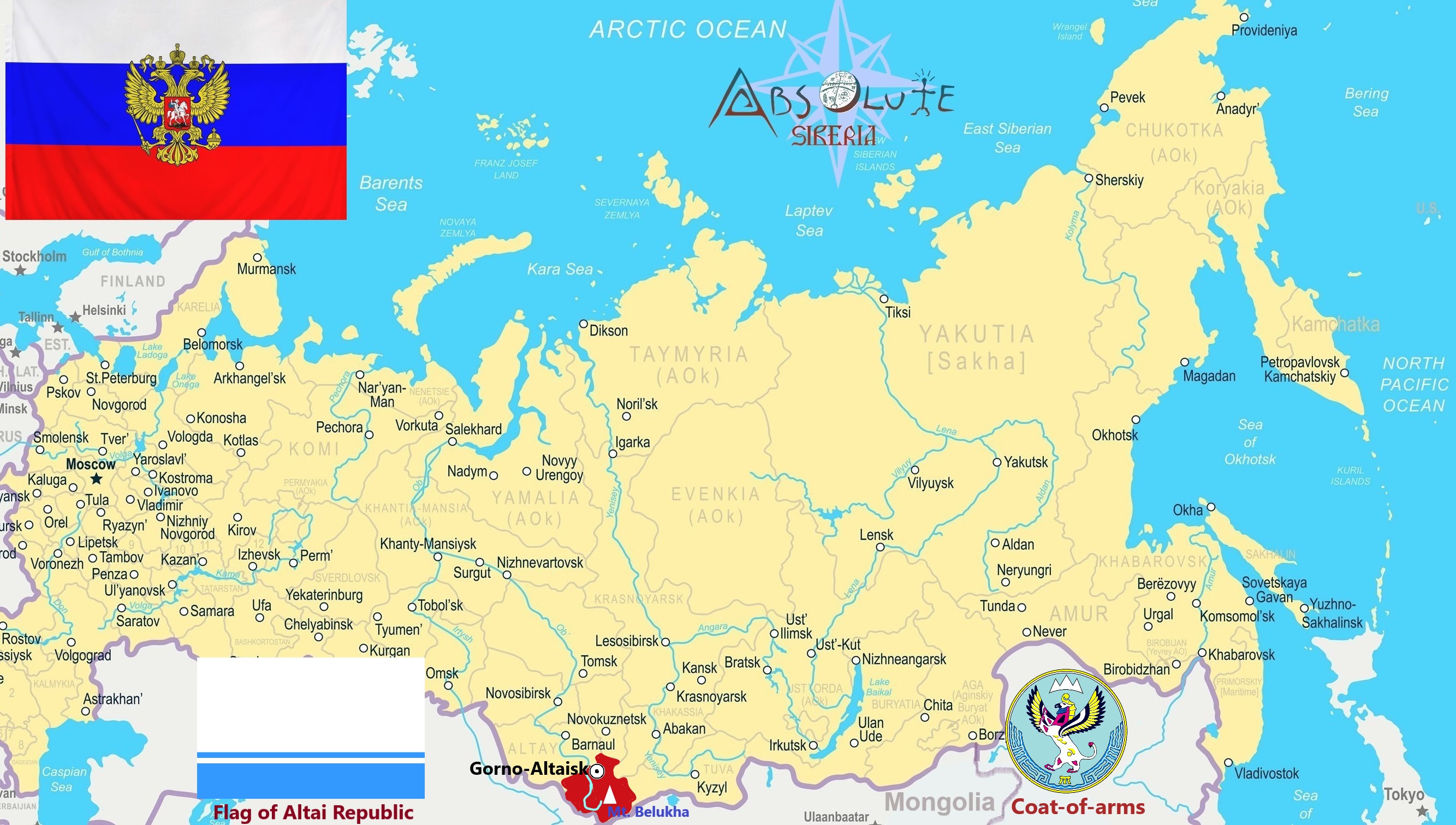
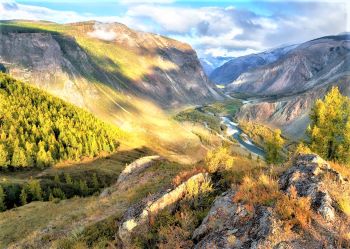
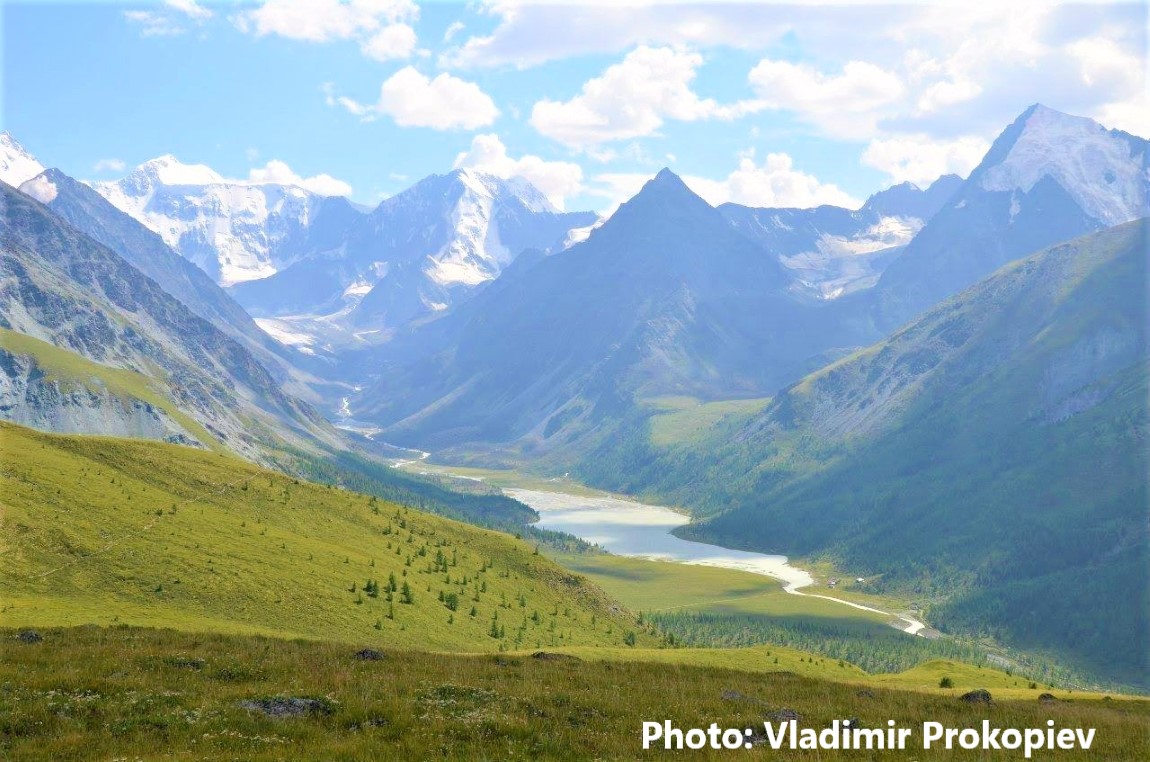
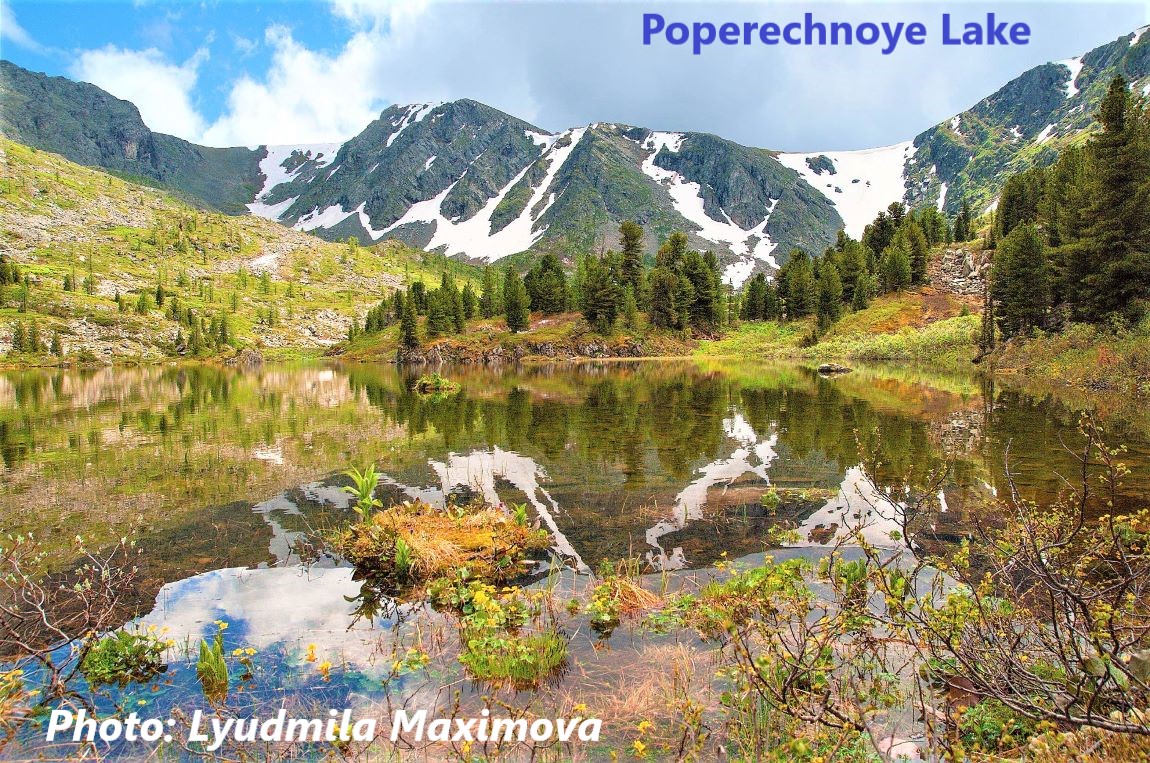
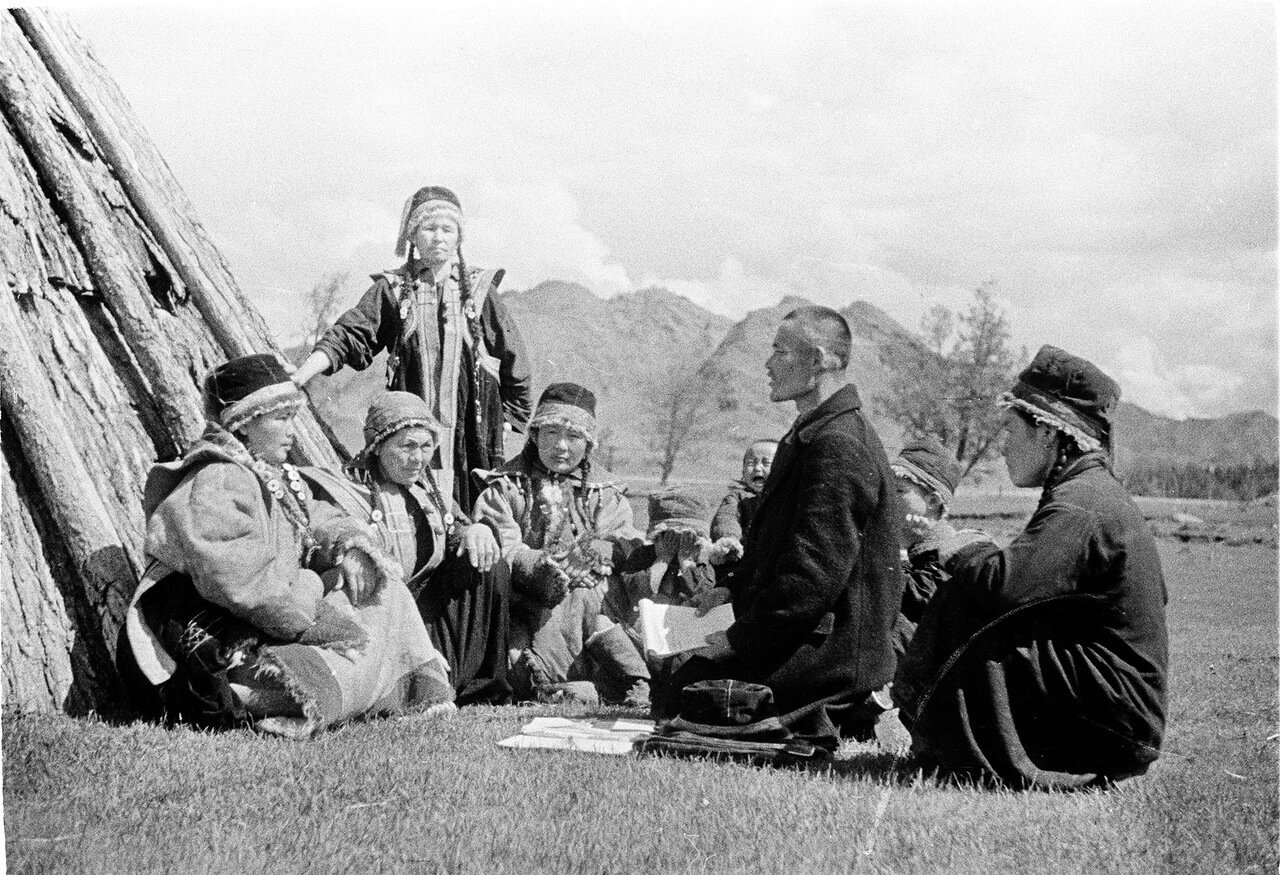
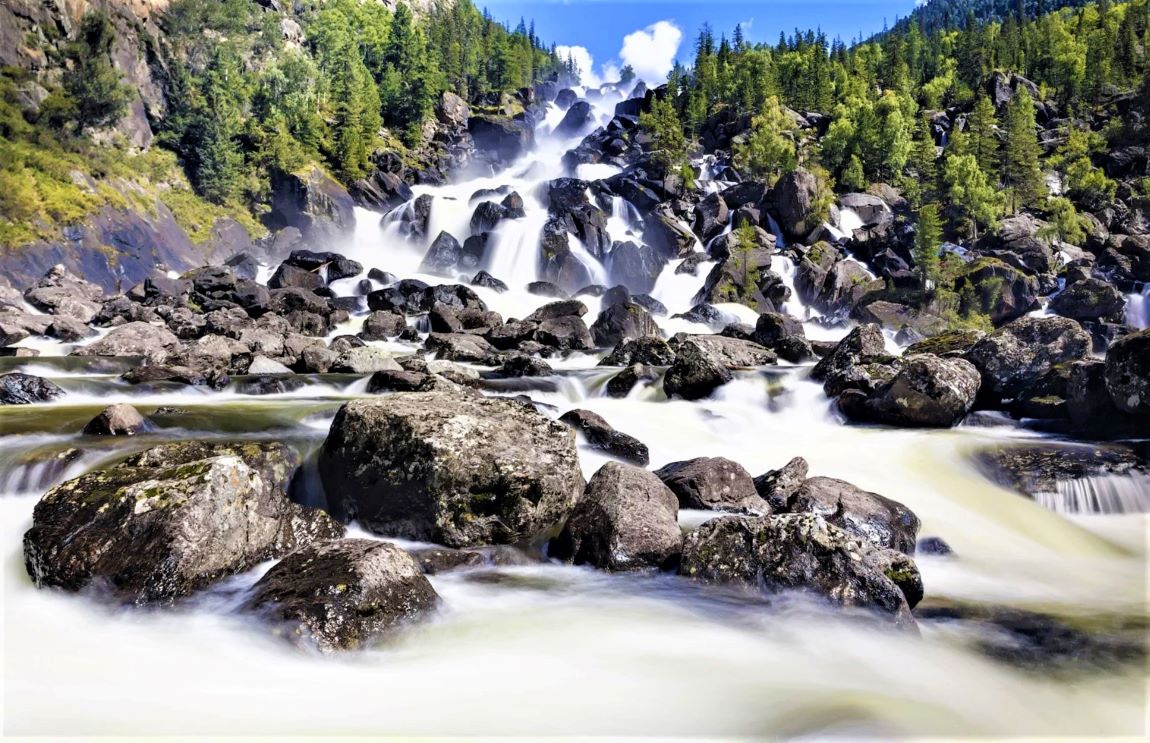
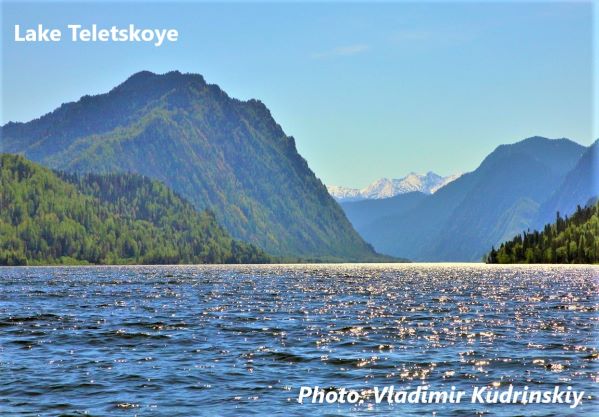
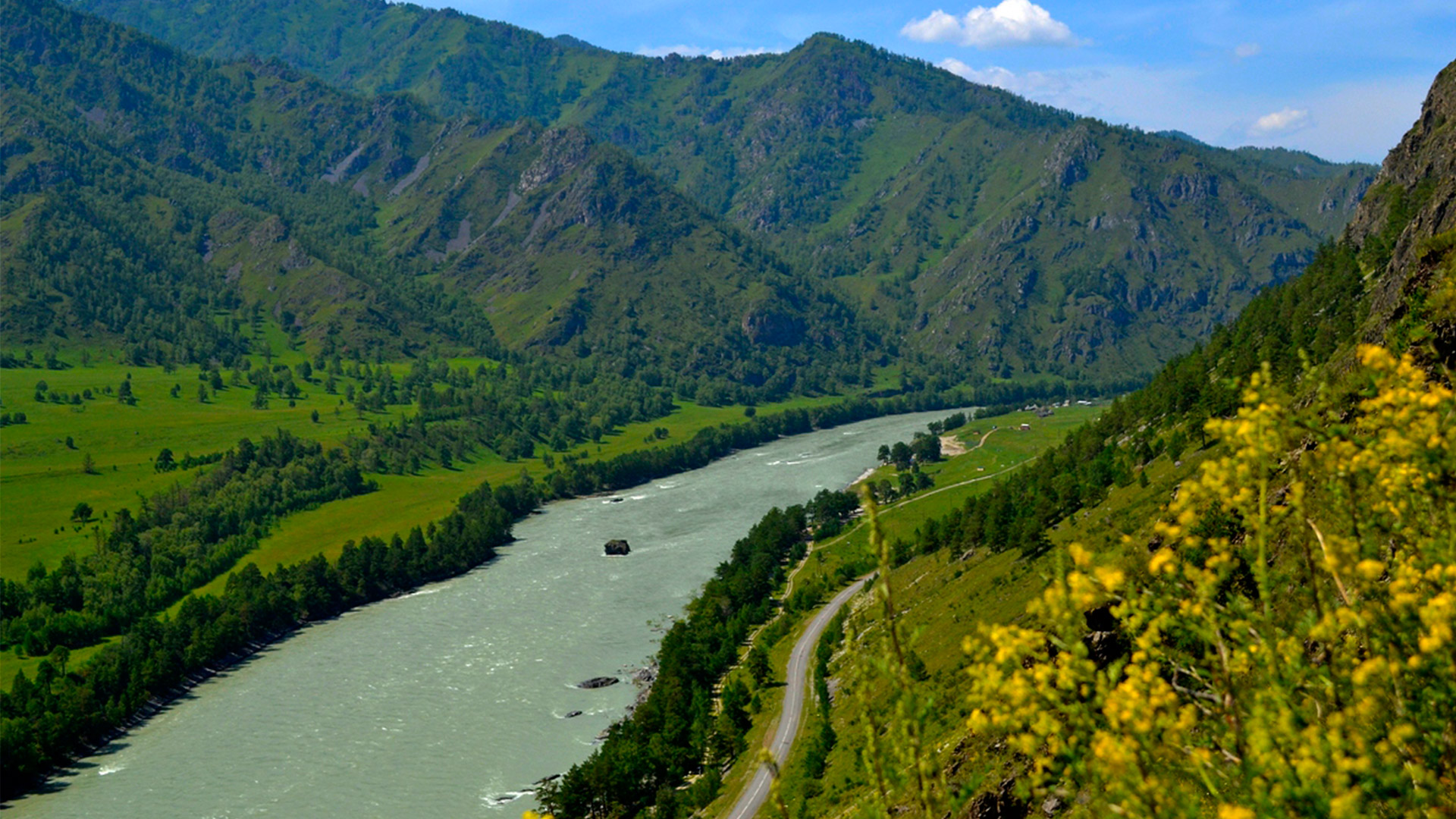
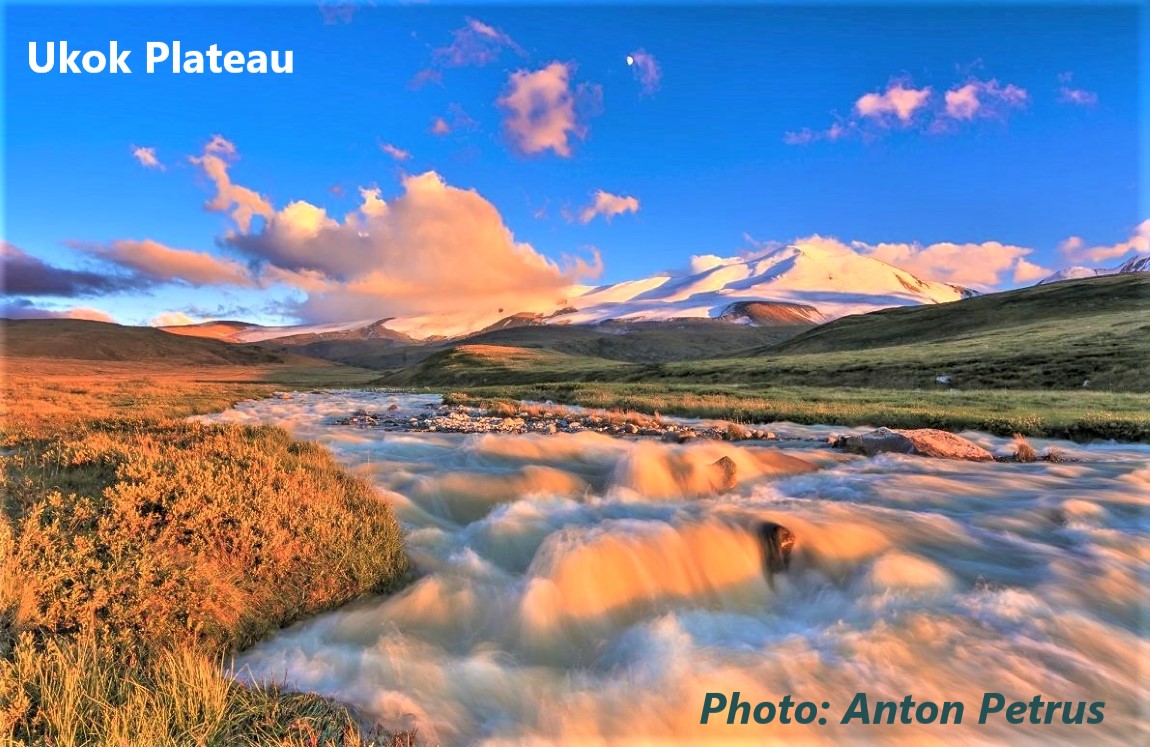
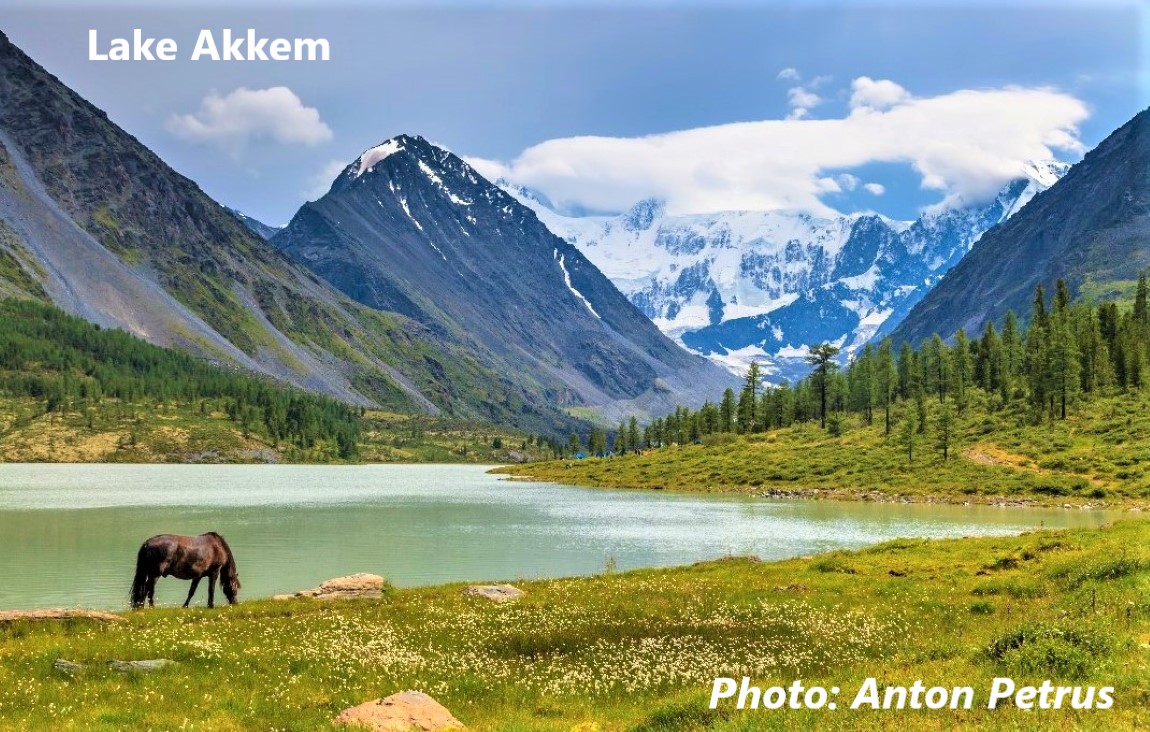 Lake Teletskoye
Lake Teletskoye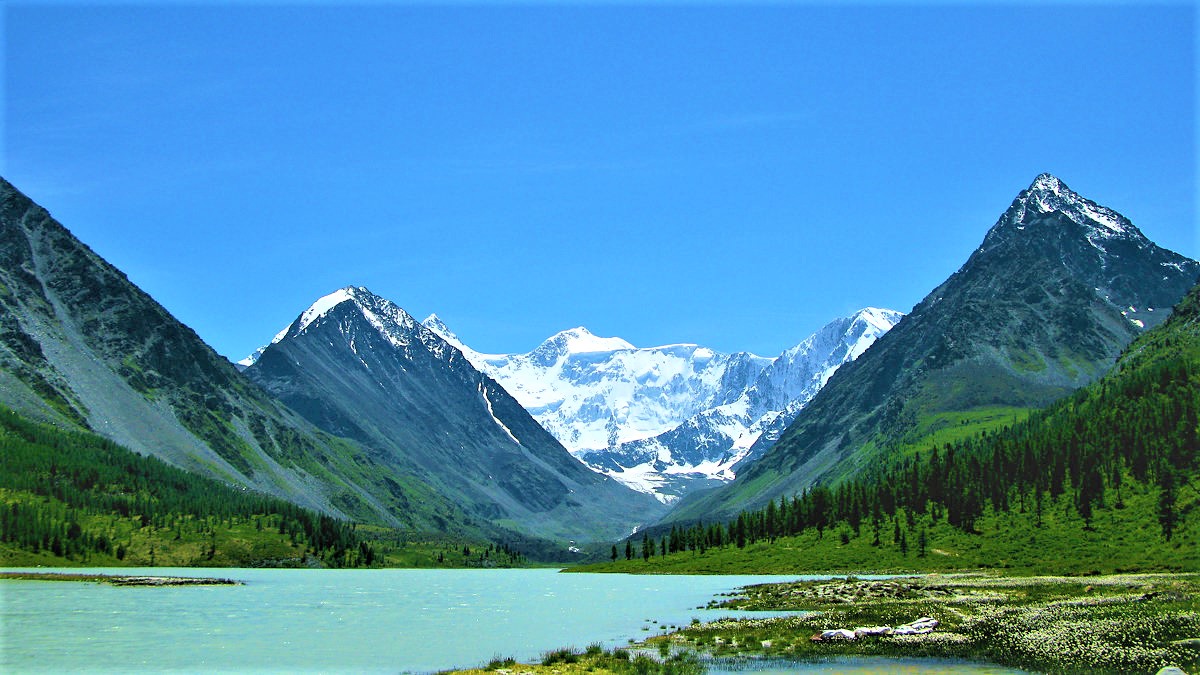 Even though Mount Belukha is the most popular mountaineering objective in Siberia, its remoteness and the long walk-in or horse ride required to reach the main valley makes it a quiet and unspoilt destination located on the Kazakh border. Some say it is also the centre of the mythical kingdom of Shambala.
Even though Mount Belukha is the most popular mountaineering objective in Siberia, its remoteness and the long walk-in or horse ride required to reach the main valley makes it a quiet and unspoilt destination located on the Kazakh border. Some say it is also the centre of the mythical kingdom of Shambala.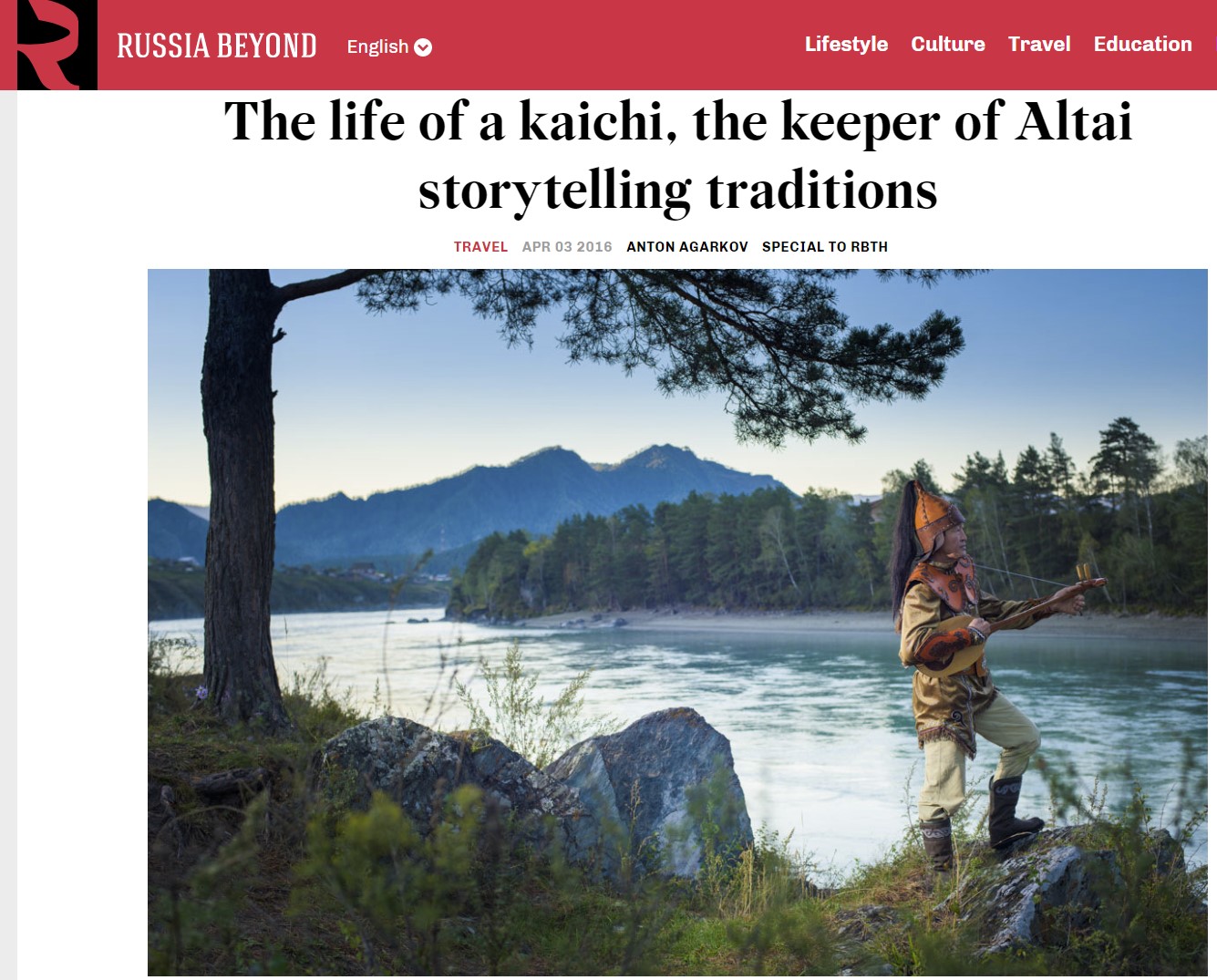
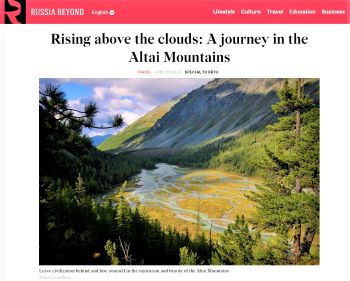
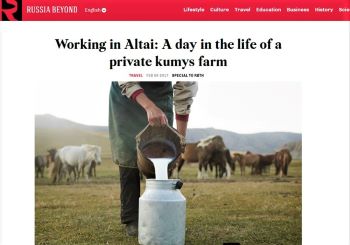
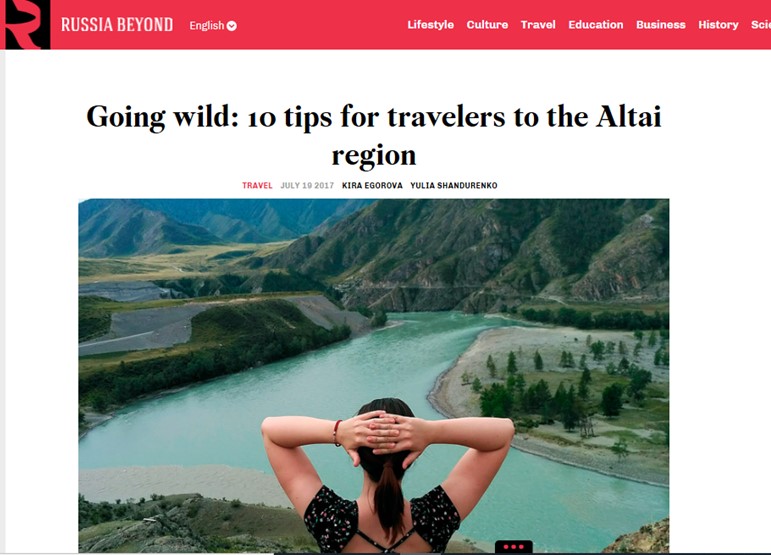 Kira Kalinina
Kira Kalinina